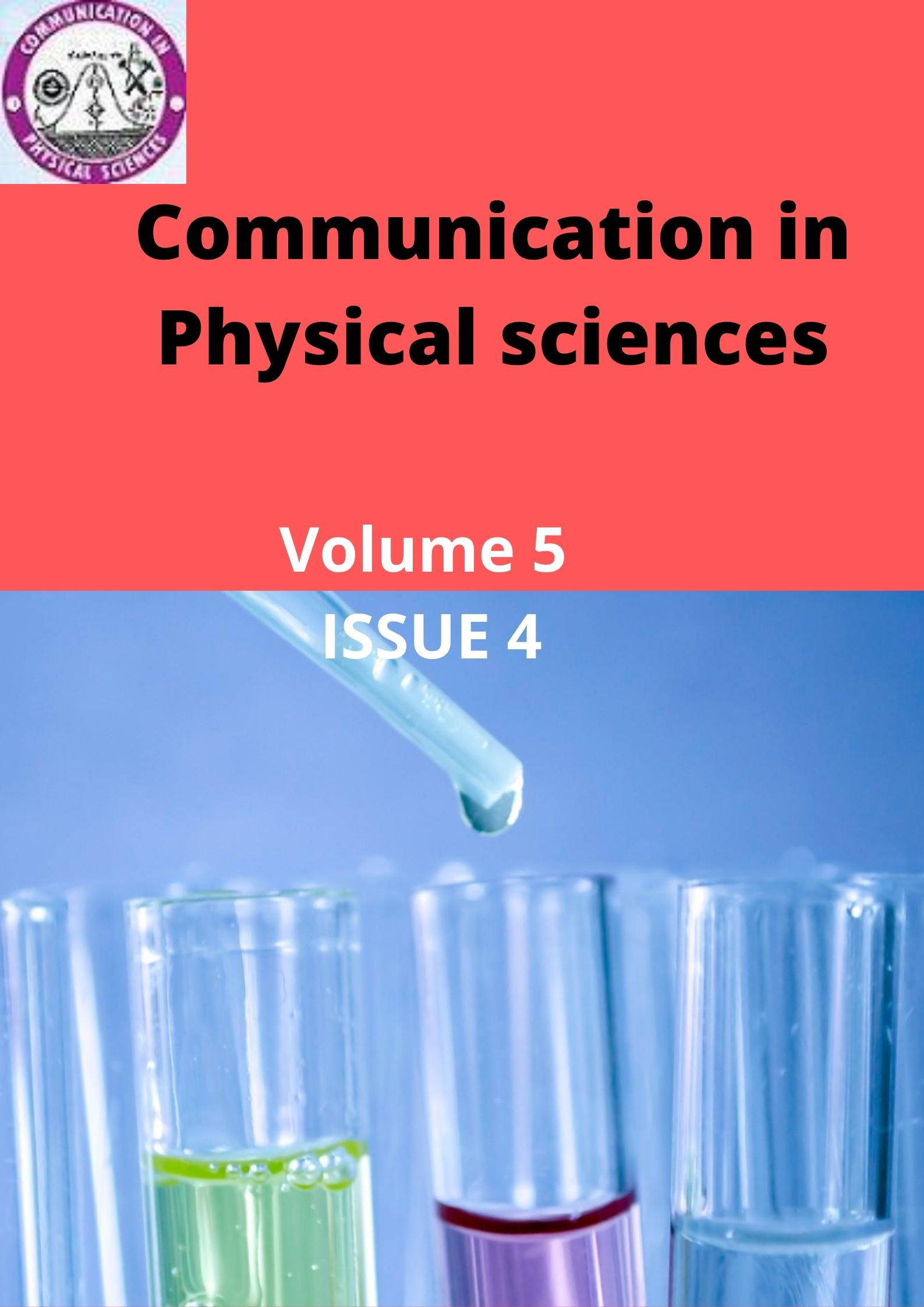Structural, Antimicrobial and in Silico Studies of Some Schiff Bases of Trans-paramethoxycinnamaldehyde Derivatives
Keywords:
Trans-paramethoxycinnamaldehyde, 2,4-diaminobenzoic acid, 2-aminophenol, 1,8-diamino-3,6-dioxaoctane, binding posesAbstract
Three Schiff bases viz; 3,5-bis[(E)-[(2E)-3-(4-methoxyphenyl)prop-2-en-1-ylidene]benzoic acid (3,5-DA), 2-[(E)-[(2E)-3-(4-methoxyphenyl)prop-2-en-1-ylidene]amino]phenol (OAP) and [3-(4-methoxy-phenyl)-allylidene]-[2-(2-{2-[3-(4-methoxy-phenyl)-allylideneamino]-ethoxy}-ethoxy)-ethyl]-amine (TPMC/DDE) are reported. The Schiff bases were synthesized from the condensation reaction of trans-paramethoxycinnamaldehyde and the primary amines (3,5-diaminobenzoic acid, 2-aminophenol and 1,8-diamino-3,6-dioxaoctane respectively), in dry methanol. The synthesized Schiff bases were characterized using UV-Visible, Fourier transform infrared (FTIR), 1H, and 13C NMR spectroscopies. The In vitro antimicrobial screening of the Schiff bases were carried out on gram-positive bacteria: (Staphylococcus aureus and Bacillus subtillus) and gram-negative bacteria: (Pseudomonasaeruginosa, and Escherichia. coli strain13) and against the fungi, Aspergillus niger and Candida albicans using the agar well diffusion method. The ligands 3,5-DA and OAP only showed activity against the fungus, Candida albicans with inhibition zone diameter (IZD) of 10 mm and minimum inhibitory concentrations (MIC) of 5.0 mg/mL and 3.0 mg/mL respectively. The ligand, TPMC/DDE also showed varying activity against the bacteria, Pseudomonas aeroginosa with an IZD of 8.0 mm and MIC of 7.5 mg/mL while Escherichia coli displayed inhibition with an IZD of 10.0 mm and MIC of 1.9 mg/mL. According to molecular docking studies, the binding affinity of the compounds towards two validated antibiotic and antifungal drug targets (DD-transpeptidase–DDPT and N-myristyol transferase-NMT) were in agreement to their observed in vitro antimicrobial activities. Moreover, their retrieved binding poses explained intermolecular forces behind the interactions that exist between the proteins and the ligands, a knowledge which is very useful in structural modification for activity optimization.
Downloads
Published
Issue
Section
Similar Articles
- Chinedum Ifeanyi Nwankwo, Onuchi Marygem Mac-Kalunta, Godfrey Ogochukwu Ezema, Nwokedi Anslem Kenecukwu, Uzoefuna Chima Casmir, Ndu Chidiebere Kingsley, Onuoha Peter Chibuzo, In Silico Anti-Inflammatory Activities of Abelmoschus Esculentus Derived Ligands On Cox-2 , Communication In Physical Sciences: Vol. 12 No. 3 (2025): VOLUME 12 ISSUE 3
- Taye Temitope Alawode, Molecular Docking Studies on Eudesmane Sesquiterpenes as Potential Anti-leishmanial Agents , Communication In Physical Sciences: Vol. 11 No. 4 (2024): VOLUME 11 ISSUE 4
- O.V. Ikpeazu, Ifeanyi E.Otuokere, K.K.Igwe, Gas Chromatography–Mass Spectrometric Analysis of Bioactive Compounds Present in Ethanol Extract of Combretum hispidum (Laws) (Combretaceae) Root , Communication In Physical Sciences: Vol. 5 No. 3 (2020): VOLUME 5 ISSUE 3
- Emeka Chima Ogoko, Chemical Information from GCMS of Ethanol Extract of Solanum melongena (Aubergine) Leaf , Communication In Physical Sciences: Vol. 6 No. 1 (2020): VOLUME 6 ISSUE 1
- B. Myek, M. L. Batari, J. O. Orijajogun, M. A. Aboki, Synthesis and Characterization of Metal Complex of an Azo Dye Based on Acid Orange 7 , Communication In Physical Sciences: Vol. 5 No. 3 (2020): VOLUME 5 ISSUE 3
- Ufuoma Shalom Onoabedje, Christopher Obodike Ezugwu, Efeturi Abraham Onoabedje, Antimicrobial Properties of 9, 12-Octadecadienoic Acid Isolated from Leaf Extracts of Acalypha Fimbriata (Euphorbiaceae) , Communication In Physical Sciences: Vol. 12 No. 3 (2025): VOLUME 12 ISSUE 3
- Usman Umar Modibbo, John Stanley, Martins Moses, Victoria John Danjuma, Nutritional and Chemical Characterization of Avocado Oil from Three Cultivars in Mambila Plateau, Taraba State, Nigeria , Communication In Physical Sciences: Vol. 12 No. 6 (2025): Volume 12 ISSUE 6
- Samuel A. Egu, Akachukwu Ibezim, Efeturi A. Onoabedje, Uchechukwu C. Okoro, N-Myristoyl Transferase Inhibitors with Antifungal Activity in Quinolinequinone Series: Synthesis, In-silico Evaluation and Biological Assay , Communication In Physical Sciences: Vol. 5 No. 4 (2020): VOLUME 5 ISSUE 4
- Dr Fatai Afolabi, Mr Ismaila Jide Olawale, Professor Sunday 0. 0ladoye, Physicochemical, Phytochemical and Gas Chromatography- Mass Spectrometric Analyses of Gmelina Arborea Root Hexane Extract , Communication In Physical Sciences: Vol. 12 No. 6 (2025): Volume 12 ISSUE 6
- Okoche Kelvin Amadi, Stella Mbanyeaku Ufearoh, Innocent Ajah Okoro, Paulina Adaeze Ibezim, Mitigation of the Corrosion of Mild Steel in Acidic Solutions Using An Aqueous Extract of Calopogonium muconoide (cm) as a green corrosion inhibitor , Communication In Physical Sciences: Vol. 8 No. 3 (2022): VOLUME 8 ISSUE 3
You may also start an advanced similarity search for this article.




